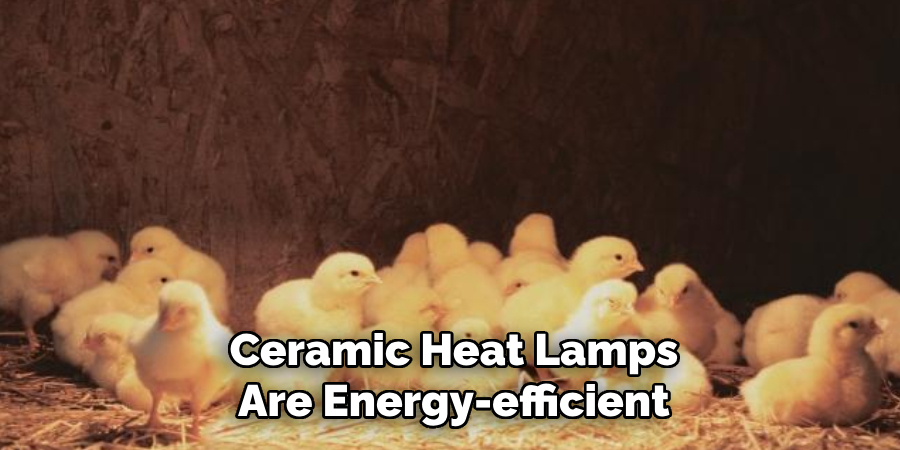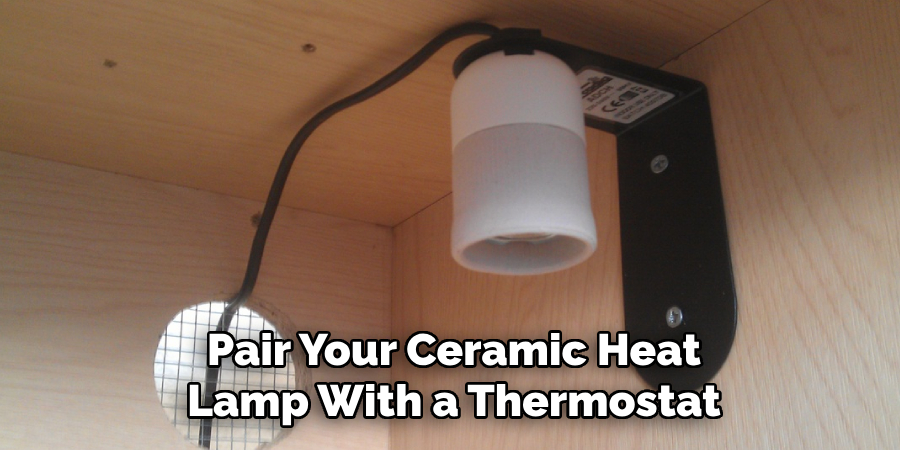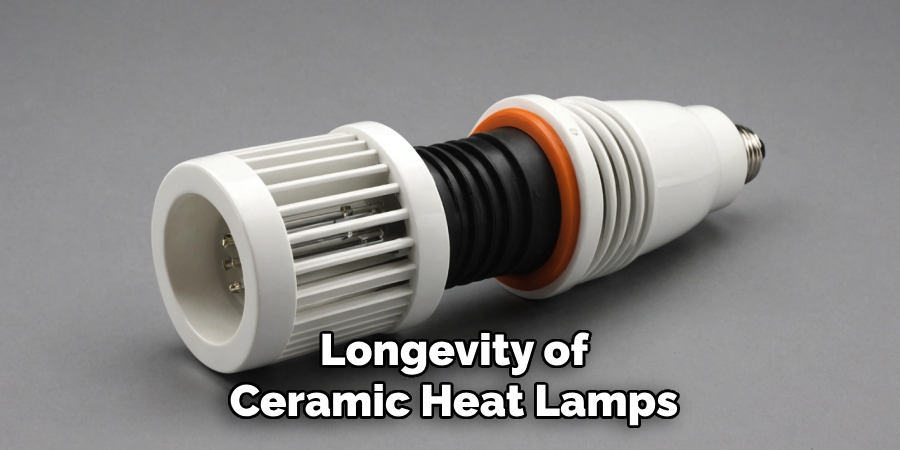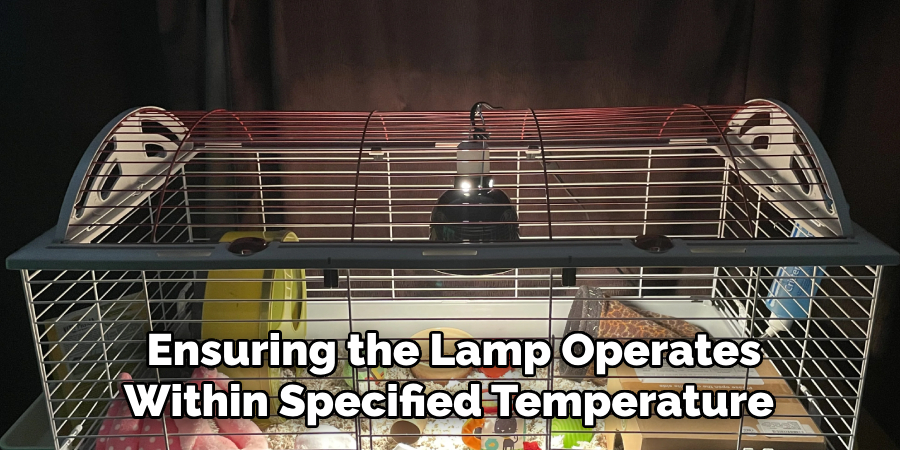Ceramic heat lamps are a reliable and efficient way to provide warmth in a variety of settings, including reptile enclosures, brooding areas for poultry, and even certain industrial applications. Unlike traditional heat lamps, ceramic heat lamps emit infrared heat without producing light, making them an excellent option for maintaining consistent temperatures without disrupting natural light cycles.

Understanding how to use these lamps properly is essential to ensure safety, efficiency, and optimal performance. This guide will walk you through everything you need to know about how to use ceramic heat lamps.
What is a Ceramic Heat Lamp?
A ceramic heat lamp is a type of heating device designed to emit infrared heat without producing visible light. Made from durable ceramic materials, these lamps are specially constructed to withstand high temperatures and prolonged use. Typically, they are designed in the form of a bulb that can be screwed into a standard heat lamp fixture.
Ceramic heat lamps are widely used in applications where consistent heat is required, such as pet enclosures, particularly for reptiles or amphibians, as well as in brooding areas for animals like chicks. Their ability to produce heat without light makes them ideal for maintaining natural day-night cycles while still providing the necessary warmth.
These lamps are energy-efficient, long-lasting, and versatile, making them an essential tool in both residential and commercial settings.
Benefits of Ceramic Heat Lamps
Ceramic heat lamps offer several advantages that make them a popular choice among users. One of the primary benefits is their ability to provide consistent and long-lasting heat. Since they emit infrared heat without light, these lamps are ideal for environments where maintaining natural light cycles is essential, such as reptile habitats or poultry brooders.
Additionally, ceramic heat lamps are energy-efficient, converting most of the electrical energy into usable heat, which can help reduce energy costs. Their durable ceramic construction also makes them highly resistant to damage from moisture or high temperatures, ensuring reliable performance over time.
Furthermore, they are versatile and can be used in various settings, making them a practical solution for both personal and professional applications.

10 Methods How to Use Ceramic Heat Lamps
1. Choose the Right Ceramic Heat Lamp for Your Needs
Selecting the right ceramic heat lamp is the first step in ensuring effective usage. These lamps come in various wattages, typically ranging from 50W to 250W, designed for different heating requirements.
For smaller spaces or delicate environments, such as a reptile enclosure, lower wattages are ideal. For larger areas, such as outdoor patios, higher wattages provide adequate warmth. Assess the size and insulation of the area you intend to heat before purchasing a lamp.
2. Pair the Lamp with a Suitable Fixture
Ceramic heat lamps require a compatible fixture that can safely handle high temperatures. Ensure the fixture is made of heat-resistant materials, such as porcelain, and rated for the wattage of the lamp.
Avoid using plastic or poorly insulated fixtures, as these can melt or pose fire hazards. Fixtures with built-in clamps or stands provide additional versatility, allowing you to position the lamp precisely where needed.
3. Position the Lamp Correctly
Proper positioning of the ceramic heat lamp is crucial for safety and efficiency. Place the lamp at an appropriate height and angle to distribute heat evenly across the area. For pet enclosures, position the lamp to create a temperature gradient, allowing animals to move between warmer and cooler zones.
Avoid placing the lamp too close to flammable materials, as the high heat can cause fires. Maintain a safe distance to ensure effective heating without compromising safety.
4. Use a Thermostat for Temperature Control
To maintain consistent temperatures, pair your ceramic heat lamp with a thermostat. A thermostat monitors and adjusts the lamp’s output, ensuring the area stays within the desired temperature range.

This is especially important for reptile enclosures, where precise temperatures are critical for the animals’ health. Set the thermostat according to the needs of the environment, and periodically check its functionality to ensure accuracy.
5. Install a Heat Guard or Cage
Ceramic heat lamps generate intense heat, making them a potential safety hazard if touched accidentally. Installing a heat guard or cage around the lamp prevents accidental contact, protecting pets, children, and other household members.
Heat guards are particularly important in pet enclosures, where animals might climb or come into contact with the lamp. Choose guards made of heat-resistant materials to ensure durability.
6. Monitor Ambient Conditions
External factors, such as room temperature and ventilation, affect the performance of ceramic heat lamps. For example, a well-insulated room retains heat more effectively, requiring less output from the lamp.
Conversely, drafty or poorly insulated spaces may need higher wattage lamps or additional heating solutions. Monitor the ambient conditions regularly and adjust the lamp’s settings or position accordingly to maintain optimal temperatures.
7. Use Ceramic Heat Lamps for Specific Applications
Ceramic heat lamps are versatile and can be used in various settings. For reptile enclosures, they provide essential heat for thermoregulation. In outdoor spaces, they offer warmth during colder months, extending the usability of patios and seating areas.
Additionally, ceramic heat lamps are used in agricultural settings to keep chicks or piglets warm. Understanding the specific application helps you maximize the lamp’s effectiveness and benefits.
8. Maintain and Clean the Lamp Regularly
Proper maintenance ensures the longevity and efficiency of ceramic heat lamps. Dust and debris can accumulate on the lamp over time, reducing its heating efficiency and potentially causing overheating.

Turn off the lamp and allow it to cool before cleaning it with a soft cloth or brush. Inspect the fixture and connections for signs of wear or damage, and replace components as needed to ensure safe operation.
9. Understand Safety Precautions
Using ceramic heat lamps requires strict adherence to safety guidelines. Avoid leaving the lamp unattended for extended periods, especially in high-risk environments.
Ensure the lamp is securely installed and that the fixture is stable. Avoid using extension cords that aren’t rated for the lamp’s wattage, as this can cause overheating and electrical hazards. Familiarize yourself with the manufacturer’s safety instructions to minimize risks.
10. Combine with Insulation for Efficiency
For maximum efficiency, combine ceramic heat lamps with proper insulation in the heated area. In pet enclosures, use insulating materials to retain heat and reduce energy consumption.
For outdoor spaces, consider installing windbreaks or using heat-reflective surfaces to direct warmth where it’s needed most. Effective insulation reduces the workload on the lamp, prolonging its lifespan and improving energy efficiency.
Troubleshooting Common Issues
Even with proper installation and usage, ceramic heat lamps may occasionally encounter problems. Here are some common issues and how to address them:
1. Lamp Not Turning On
If your ceramic heat lamp fails to turn on, check the following:
- Power Supply: Ensure the lamp is securely plugged in and that the outlet is functioning correctly. Test the outlet with another device to confirm power availability.
- Bulb Condition: Inspect the lamp for visible damage, such as cracks or discoloration. A damaged bulb should be replaced immediately.
- Fixture Compatibility: Confirm that the fixture is rated for the lamp’s wattage and type to prevent electrical issues.
2. Uneven Heating
Uneven heating can result from improper placement or environmental factors:
- Positioning: Adjust the lamp to ensure even heat distribution across the intended area. For pet enclosures, create a temperature gradient as needed.
- Ambient Conditions: Drafts or poor insulation can disrupt heat consistency. Address these factors by closing windows, sealing gaps, or improving the enclosure’s insulation.
3. Overheating
Overheating can pose safety risks or harm animals in enclosures:
- Thermostat Settings: Check that the thermostat is set correctly and functioning properly. Replace a faulty thermostat to maintain the desired temperature range.
- Ventilation: Ensure adequate airflow around the lamp to prevent excessive heat accumulation. Avoid enclosing the lamp in tight spaces.
4. Flickering or Intermittent Operation
Intermittent operation may indicate electrical or connection issues:
- Loose Connections: Verify that the bulb is tightly screwed into the fixture and that all connections are secure.
- Faulty Wiring: Inspect the wiring for signs of wear or damage. Replace damaged cords or consult a professional if needed.
5. Shortened Lifespan
If your ceramic heat lamp burns out prematurely:
- Proper Usage: Avoid turning the lamp on and off frequently, as repeated cycling can reduce its lifespan.
- Excess Wattage: Using a lamp with excessive wattage for your application can lead to faster burnout. Use lamps rated appropriately for your needs.
- Overheating: Prevent overheating by ensuring the lamp operates within specified temperature limits and with proper ventilation.
By addressing these common issues promptly, you can ensure your ceramic heat lamp operates efficiently and safely over its lifespan.

Conclusion
Ceramic heat lamps are reliable and versatile tools for providing heat in a variety of settings. By following these ten methods, you can use them safely and effectively to meet your heating needs.
Follow these simple instructions outlined in this blog post about how to use ceramic heat lamps, and you’ll be able to get the job done with ease.
Specialization:
- Master of wheel-throwing, hand-building, and advanced glazing techniques
- Focus on creating both functional pottery and decorative art pieces
Recognition:
- Celebrated by collectors and art enthusiasts for creating one-of-a-kind pieces that blend artistry with functionality
- Participates in local and national exhibitions, earning accolades for his innovative designs and craftsmanship
Passion:
- Deeply committed to exploring and pushing the boundaries of ceramic artistry
- Continuously experiments with new materials, firing techniques, and artistic concepts to evolve his craft
Personal Philosophy:
- Believes in the transformative power of art, aiming to evoke emotions and connections through his ceramic creations
- Advocates for sustainability in ceramics, using eco-friendly materials and practices whenever possible


